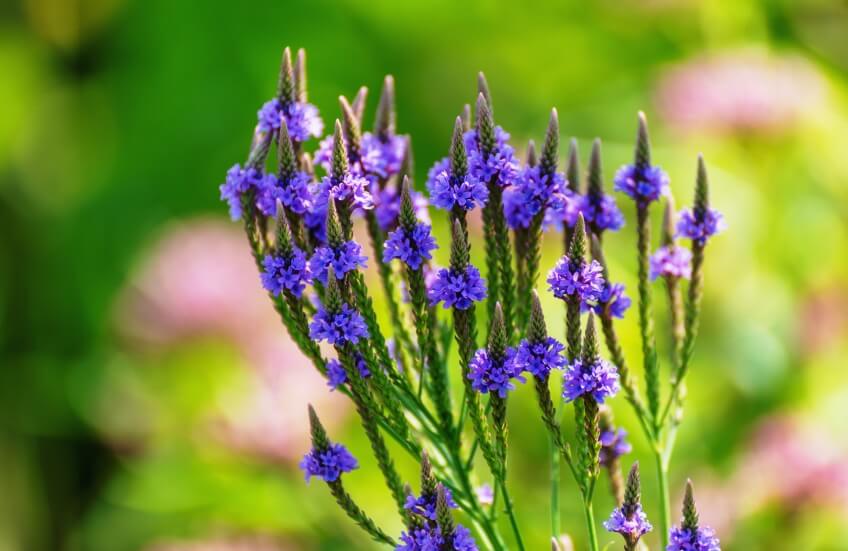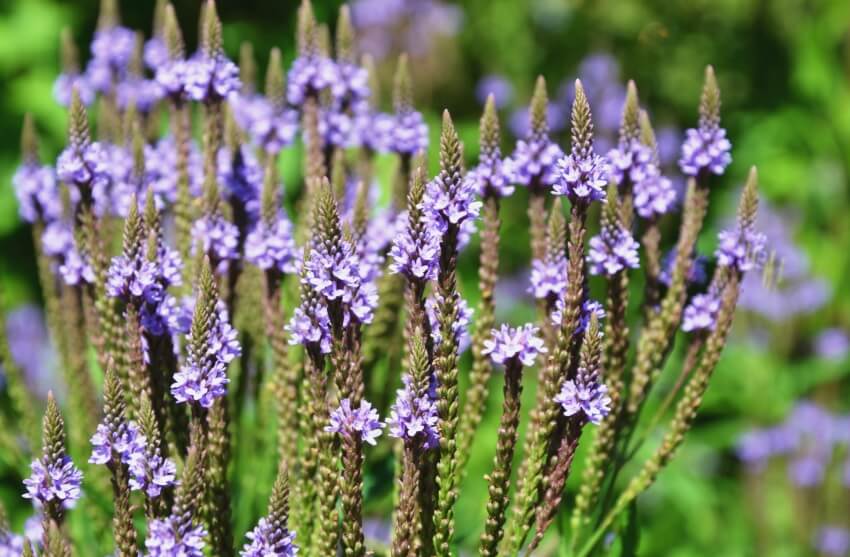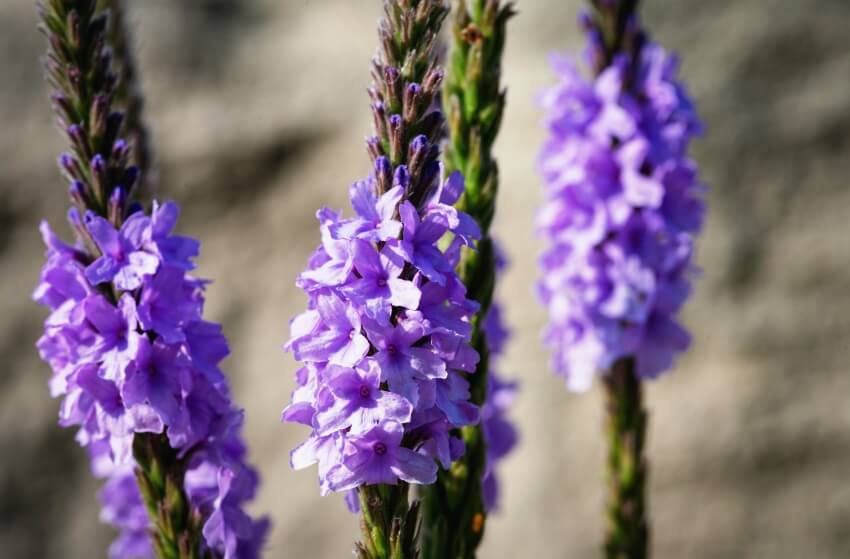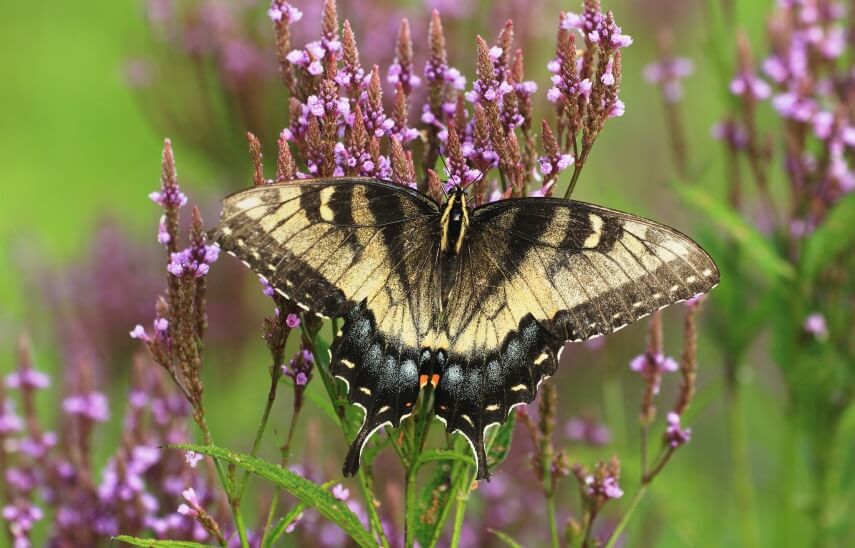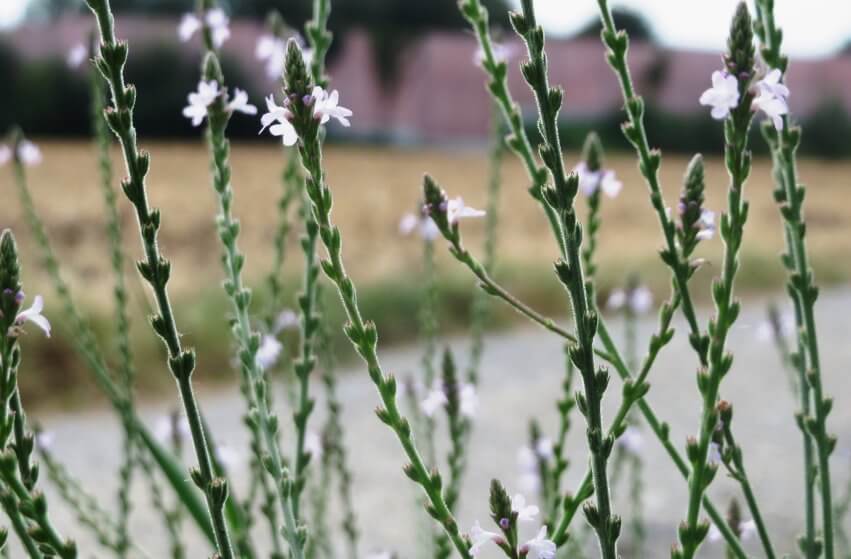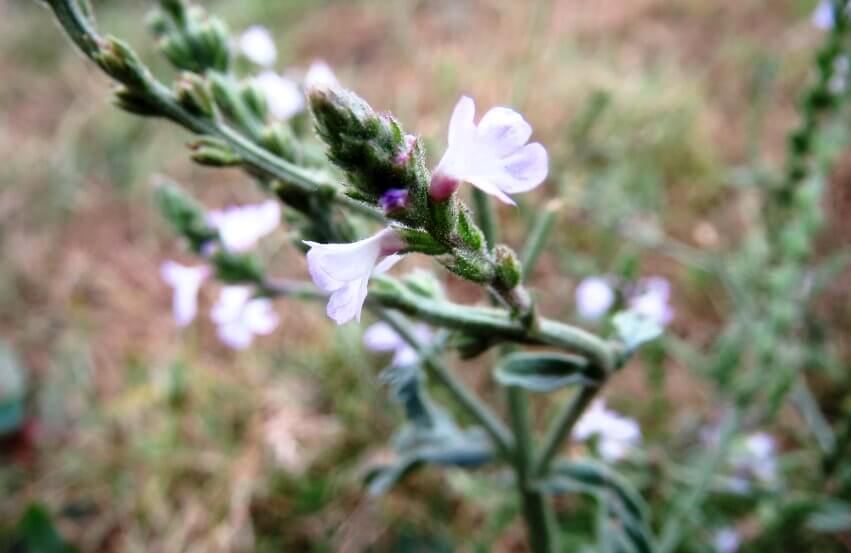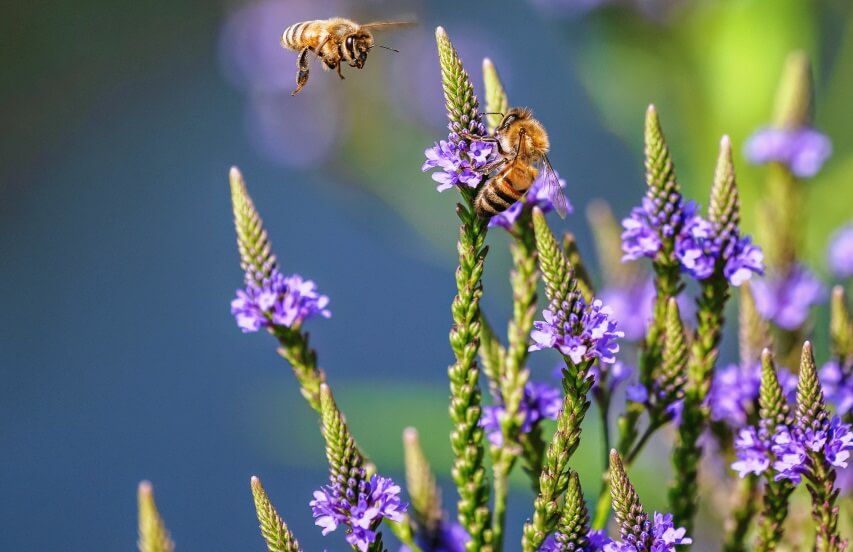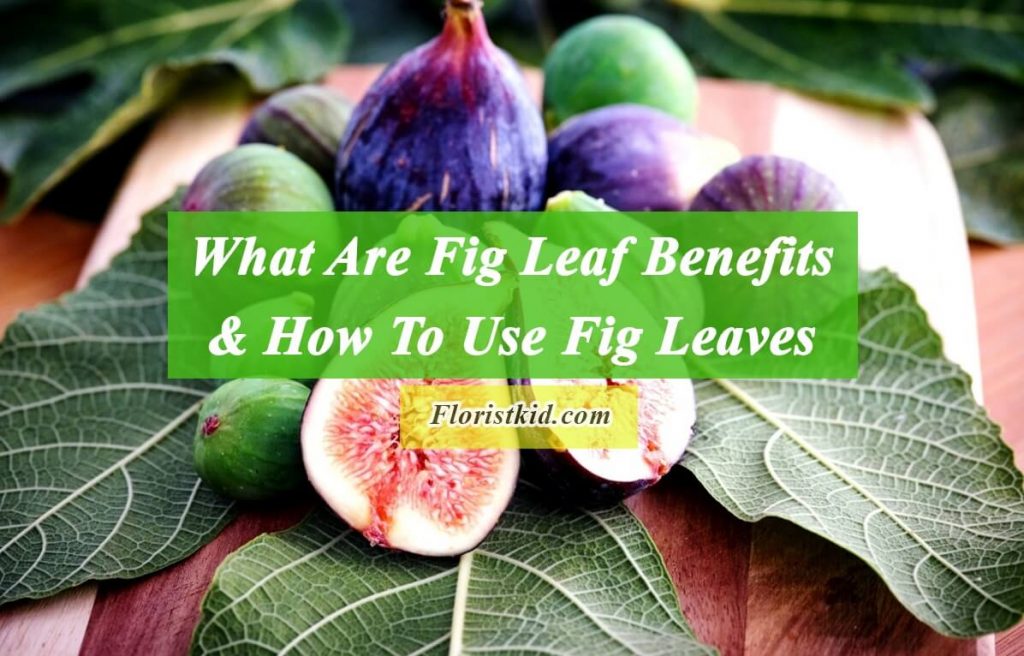The clusters of stunning purple flower spikes of Vervains possess the ability to enhance the charm of the garden, serving as a notable accent. Planting them in larger groups can create a more striking impact, causing them to stand out prominently. Vervains act as a magnet for a diverse pollinator species, offering direct benefits to numerous pollinators.
Besides being beautiful and attracting pollinators, Vervain species have many health benefits that sometimes overlap each other, but it’s important to know that sometimes different vervains possess different medical values. For example, American blue vervain (scientifically known as Verbena hastata) has different health benefits from common vervain (Verbena Officinalis). This article will go through the health benefits of both common and blue vervain.
If you are interested in this topic , you can also read
<<Cancer Bush Tea Benefits>> and <<ِDill Seeds Benefits>> articles.
About Verbena Hastata And Officinalis
Verbena, commonly referred to as vervain, is a genus in the Verbenaceae family. There are 150 or more species of annual, perennial, herbaceous, or semi-woody blooming plants there. Most vervain species are indigenous to the Americas and Asia, but some species, like Verbena officinalis, also known as common vervain or common Verbena, are indigenous to Europe.
Blue vervains (Verbena hastata)
Blue vervain, scientifically named Verbena hastata and commonly referred to as American vervain, simpler’s joy, or swamp verbena, is a plant indigenous to subtropical areas of North and South America, with a partial presence in Europe and Asia. It is identifiable by its serrated leaves and bunches of soft mauve or light purple flowers, which typically bloom from mid-to-late summer.
Common vervain (Verbena Officinalis) – Source: Andreas Rockstein
Verbena Officinalis, or common vervain, is another member of the Verbenaceae family and is another well-known medical plant in both traditional and modern medicine. Vervain’s natural environments can be found globally, spanning regions such as Europe, the Americas, North and Central Africa, Asia, and Australia. This perennial plant typically grows to a medium height and features a square-shaped stem, leaves with serrated edges, and pale lilac flowers that are not very noticeable. Vervain is known for its leaves, which vary in shape and texture, feeling rough to the touch. The lower leaves are single and have stems, while the middle leaves are grouped in threes, and lack stems. The upper leaves, too, are stemless and single in form.
They’re all used therapeutically, and there is quite a bit of overlap in their benefits, but there are also some differences and the benefits we’ll cover below.
Cultural Significance And Healing Legacy Of Vervains
In Ireland, the ancient Druids believed in the supernatural capabilities of vervain. Hippocrates, the renowned Greek physician, is credited with recommending Verbena officinalis for treating fever and plague. Within Christian legends, vervain gained significance for its application in treating the wounds of Christ on the cross, resulting in its alternate name, “the herb of the cross.” Beyond this, the Aztecs and several Native American tribes utilized the roots and flowers of vervain as a diuretic and a natural remedy for various ailments such as headaches, circulatory problems, and insomnia.
Therapeutic Properties Of Vervains
Vervains are considered significant reservoirs of novel chemical compounds that could potentially have therapeutic benefits. Abundant in flavonoids, blue vervain has displayed properties such as anti-inflammatory, antibacterial, antispasmodic, and pain-relieving effects. In folk medicine, various Verbena species, including blue vervain, have been employed to combat ailments like ascaris, provide demulcent effects, alleviate constipation, regulate menstrual flow, enhance milk secretion, address herpes zoster, induce sedation, treat snake bites, and relieve stomachaches.
An analysis of blue vervain leaf extract has identified the presence of compounds like Saponins, Tannins, Flavonoids, Steroids, Terpenes, and Carbohydrates. Some even assert that common vervain might possess anti-tumor qualities, contributing to its potential in cancer treatment. This herb has also been utilized as an antiperiodic, diaphoretic, and expectorant, effectively eliminating intestinal worms.
Potential Health Benefits Of Vervains
There is considerable overlap in the therapeutic effects of Verbena hastata and Verbena officinalis, but there are also a few differences. In this section, we will focus on the health benefits of Verbena officinalis and Verbena hastata.
Health Benefits Of Blue Vervain (Verbena Hastata)
Anti-Diarrheal Effect
Diarrhea presents a significant health concern, particularly in developing nations, contributing to an annual global mortality rate of 5 to 8 million people. Using herbal remedies for managing diarrhea is prevalent in numerous African countries. As a readily available plant, blue vervain is popular among the people and offers cost-effective alternatives to conventional medicine.
A study endeavor in Nigeria exhibited noteworthy results, where the extract notably curbed both defecation frequency and fecal moisture in rats. Blue Vervain extract contains compounds like flavonoids, saponins, sterols, and terpenes, which are acknowledged for their potential in alleviating diarrhea.
Anti-inflammatory And Pain Killer
Recent studies using animal models have shown that the leaf extract of blue vervain has clear analgesic, anti-inflammatory, and antipyretic (fever-reducing) effects.
Wound Healing
Other investigations have indicated a significantly robust capacity for blue vervain to safeguard against ulcers, a level of efficacy comparable to the recognized ulcer-preventing drug Ranitidine. Furthermore, this healing plant demonstrated no adverse effects in rats except for inducing drowsiness.
The active components in the leaf extract, particularly tannins, likely contribute to its anti-ulcer effects. It’s plausible that the presence of flavonoids in blue vervain also influences this outcome. Flavonoids not only exhibit antioxidant traits but also reinforce the mucosal defense system by promoting the secretion of gastric mucus.
Anti-Malarial Effect
Malaria is recognized as one of Africa’s most prevalent parasitic diseases, primarily considered endemic. This disease stems from the parasite Plasmodium and continues to be a significant public health concern, contributing to the annual mortality of over a million children below the age of five.
A particular study involved the oral administration of ethanol leaf extract from blue vervain to mice infected with Plasmodium, both during the initial and established phases of infection. The outcomes of this research suggested that the in vivo use of ethanolic leaf extract from Verbena hastata exhibited some effectiveness against the Plasmodium berghei malaria parasite. An analysis of the ethanolic leaf extract also confirmed the presence of saponins, terpenes, flavonoids, sterols, and carbohydrates, which are secondary metabolites. These compounds’ presence might explain the traditional medicinal use of this plant in African contexts to combat malaria.
Health Benefits Of Common Vervain (Verbena Officinalis)
Anti-Inflammatory Effect
A cream containing at least 3% common vervain methanolic extract has been found to reduce inflammation and provide pain relief when applied to the skin. This could help treat local swelling. The anti-inflammatory effect of the common vervain extract is believed to be similar to the effect of piroxicam gel.
Researchers from Spain think that certain compounds like iridoids, caffeoyl derivatives, and flavonoids in common vervains are responsible for their anti-inflammatory effect. Additionally, substances like Potassium apigenin (AP) and other flavonoids in verbena extract also have strong anti-inflammatory properties.
Natural Calming Remedy
Common Vervain, historically used to address epilepsy and tic disorders, possesses a moderate sedative quality that relieves anxiety, nervousness, and insomnia. This plant acts as a muscle relaxant and is commonly recommended by herbal practitioners. Common Vervain contributes to calming, restoring, and regulating the nervous system.
Its remarkable ability not only relaxes the body but also alleviates intrusive thoughts that hinder sleep. Additionally, Common Vervain is effective during the daytime, aiding with restlessness, mental tension, anxiety, and depression. Moreover, scientific studies support its potential as an anti-depressant, making it a potentially valuable option for treating depression.
Anti-Tumor Effect
As a traditional herbal remedy in Chinese medicine, common vervain has abundant resources and is widely distributed across China. Exploring its potential as an anti-tumor agent offers promising avenues. In a recent investigation, the anti-tumor properties of Verbena officinalis plants were evaluated using mice-bearing tumors as the experimental model. The study also delved into understanding the underlying mechanisms behind its anti-tumor effects.
The findings successfully established that extracts from Verbena officinalis exhibited in vivo anti-tumor properties without adversely affecting immune function. The presence of triterpenoid compounds in this plant is believed to account for its anti-tumor capabilities. Moreover, separate research highlights the efficacy of common vervain essential oil in effectively targeting cancerous cells in skin cancer patients.
Verbena Officinalis flowers – Source: Andreas Rocksteins
Anti-Microbial Effect
Essential oils as potential substitutes for conventional chemical pesticides are gaining increasing attention. A study was conducted to assess the effectiveness of Verbena officinalis essential oil against various plant-related or human pathogens in a controlled environment.
The results indicated that the common vervain essential oil hindered the growth of tested microorganisms, which included Bacillus megaterium, Bacillus mojavensis, Clavibacter michiganensis, Escherichia coli, Xanthomonas campestris, Pseudomonas savastanoi, and P. syringae pv. phaseolicola. This inhibition was observed in a manner that correlated with the dosage administered.
A Good Mouthwash
In a research effort, a total of 130 participants were instructed to utilize a common vervain decoction for rinsing their mouths, along with their regular oral hygiene practices of brushing and flossing. The results, observed at both the 14-day and 28-day assessments, indicated a notable reduction in plaque formation within participants oral cavities compared to the control group.
Nerve-Protecting Properties
Multiple research studies indicate that verbenalin and cornin, two compounds found in common vervain, may be able to safeguard neurons. One study discovered that common vervain can aid in recovery following a stroke. Additionally, treatment with cornin was shown to stimulate the formation of new blood vessels (angiogenesis) in the damaged core of the brain and enhance functional outcomes post-stroke.
Further evidence supporting the neuroprotective properties of common vervain comes from a study demonstrating its capacity to detoxify cortical neurons in the central nervous system from beta-amyloid (Abeta) peptide. This suggests that common vervain has demonstrated its potential as a neuroprotective agent against neuronal loss in Alzheimer’s disease.
Source: Rockstein
Restful Sleep
For generations, herbal tea derived from vervains has been a traditional remedy for addressing insomnia and various nervous disorders. A study conducted in Japan investigated the sleep-enhancing effects of key components in common vervain, namely hastatoside, verbenalin, and verbascoside. These substances, categorized as major iridoids and polyphenols responsible for Verbena’s medicinal properties, were found to induce non-rapid eye movement (NREM) sleep in rats during the nighttime hours. Another study also proved that common vervain can improve sleep quality since they have Hastatoside and verbenalin as major sleep-promoting components.
Vervains Benefits For Female
Vervains have gained extensive historical use in addressing conditions such as amenorrhea, inadequate lactation, and aiding labor contractions, rendering them particularly favored among expectant mothers. Vervain operates as a uterine stimulant, encouraging contractions in pregnant women and facilitating menstruation for those who are not pregnant. They also offer assistance during challenging childbirths, alleviate discomfort during menstrual periods, and address complaints commonly associated with menopause.
In addition, vervains have been used historically to help breastfeeding mothers produce more milk. However, there is yet another use that lacks scientific backing.
Incorporating Vervain Into Your Routine
Certain individuals apply Verbena topically to address slow-healing wounds, abscesses, and burns. It’s also used for arthritis, rheumatism-related joint pain, dislocations, bone bruises, and itching. For relief from insect bites, vervain can be utilized as a skin lotion or through a compress.
Fresh vervain plants can be crushed into a pulp, or a strong vervain tea can be prepared and used to soak a clean cloth for direct application. Additionally, vervain is employed as a gargle to alleviate symptoms of colds and other mouth and throat ailments. The traditional mode of applying medicinal vervain is through brewing it into tea. Adjusting to the taste of vervain tea might take some time, as its bitterness is notably pronounced, which can be unfamiliar to modern palates less accustomed to such flavors.
Considerations And Guidelines For Everyday Use
It’s always advisable to consult an herbalist or a professional specializing in herbal medicine, particularly if you’re new to using medicinal herbs. If you have underlying medical conditions or are currently undergoing treatment for any health concerns, it’s important to consult your physician before introducing any new herbal remedies. While Verbena doesn’t generally exhibit well-documented side effects or interactions with medications, it’s wise to avoid excessive consumption.
It’s worth noting that blue vervain (Verbena hastata) could potentially interfere with medications prescribed for managing blood pressure and those used in hormone therapy. In some cases, taking larger doses of blue vervain led to diarrhea and vomiting. Furthermore, due to its ability to stimulate labor, it’s recommended not to use vervain if you’re pregnant. In fact, midwives often utilize vervain precisely because of its effectiveness in encouraging labor.


